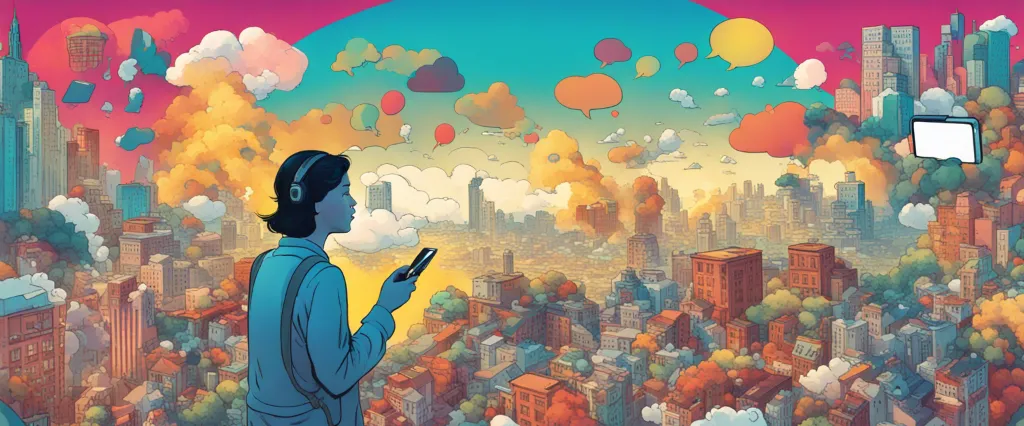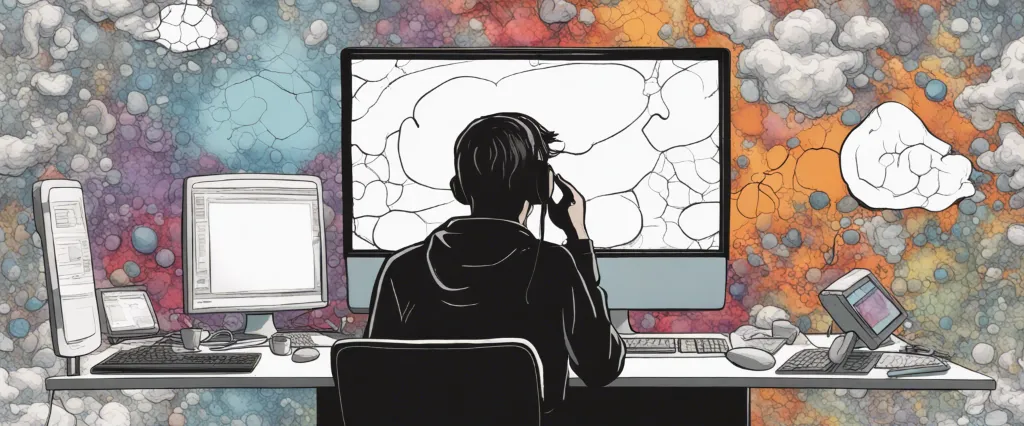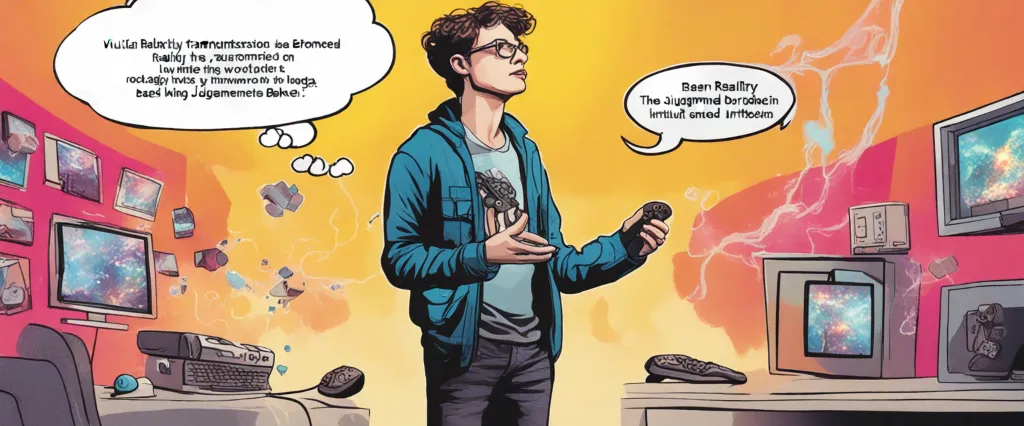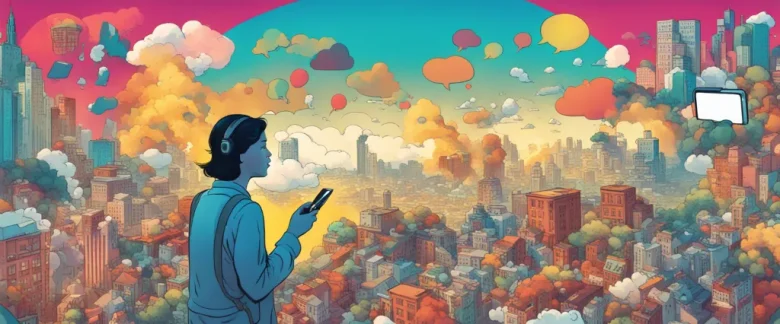
In her groundbreaking book, “Reality is Broken,” Jane McGonigal offers an intriguing perspective on the power of gaming to transform our lives and tackle real-world problems. With deep insight and extensive research, McGonigal delves into the world of video games, highlighting their potential to solve social, economic, and environmental challenges. As a renowned game designer and researcher, McGonigal brings her expertise and passion to the forefront, shedding light on how gaming can provide us with the motivation, sense of accomplishment, and collaborative spirit that are often missing from our daily lives. Let us embark on this thrilling journey with Jane McGonigal as we explore the potential for gaming to revolutionize our reality.
Chapter 1: The Power of Games
Chapter 1 of “Reality is Broken” by Jane McGonigal explores the concept of the power of games and their potential for creating positive impact in our lives. McGonigal starts by highlighting the fact that the average person spends countless hours playing games, emphasizing their tremendous appeal and influence. She argues that games tap into a deep human need for engagement, challenge, and meaning, which are often lacking in our day-to-day reality.
The author introduces the concept of “game design,” explaining how the principles that make games enjoyable and immersive can be applied to real-world situations to solve complex problems. McGonigal suggests that adopting these game elements in various aspects of our lives, such as education, healthcare, and the workplace, could fundamentally redefine our approach to challenges and make the world a better place.
The chapter delves into the psychological effects games have on individuals, particularly focusing on their ability to induce a state of “flow.” Flow is a state of deep concentration and complete immersion in an activity, where one loses track of time and becomes fully engaged. McGonigal argues that games have the unique ability to consistently generate flow, offering a type of experience that is often lacking in real-life activities.
The author also highlights the social aspect of games, demonstrating how they have the power to bring people together and create a sense of community. She discusses how multiplayer games facilitate the formation of bonds, enable collective problem-solving, and strengthen social connections. These positive social interactions within games can be leveraged to tackle real-world challenges more effectively.
Overall, Chapter 1 of “Reality is Broken” presents a compelling case for the transformative potential of games. McGonigal suggests that by harnessing the power of games in various domains, we can enhance our well-being, boost productivity, and even address global issues collectively.
Chapter 2: The Problem with Reality
Chapter 2: The Problem with Reality of the book “Reality is Broken” by Jane McGonigal delves into the concept of reality and how it fails to meet the needs and desires of humans, particularly in comparison to the fulfilling experiences provided by games.
McGonigal starts by explaining that reality often falls short in terms of engagement, purpose, and the ability to overcome challenges. In contrast, games provide a sense of meaning and purpose, clear goals, and immediate feedback. This disparity has contributed to the rise of unprecedented levels of game engagement.
The chapter explores four key reasons why reality fails to captivate us the way games do. Firstly, reality lacks clear goals. While games provide players with precise objectives and metrics for measuring success, reality often lacks these elements, leaving individuals feeling aimless and unsure of how to progress.
Secondly, reality lacks clear rules. In games, rules provide structure and create a level playing field. In reality, however, subjective interpretations and changing expectations make it challenging to navigate social situations and achieve desired outcomes.
Thirdly, reality lacks immediate feedback. Games offer immediate feedback that informs players about their progress and motivates them to continue. In reality, feedback is often delayed, inconsistent, or nonexistent, hindering individuals’ abilities to improve and succeed.
Lastly, reality suffers from a lack of voluntary participation. While games are designed to be engaging and enjoyable, many real-world tasks and responsibilities are unappealing or burdensome, resulting in low motivation and engagement.
McGonigal concludes the chapter by highlighting the potential of game design principles to address these shortcomings in reality. She argues that by incorporating elements such as clear goals, rules, and feedback into reality, humans can lead more fulfilling and engaging lives.
Chapter 3: The Engagement Economy
Chapter 3 of “Reality is Broken” by Jane McGonigal, titled “The Engagement Economy,” delves into the concept of engagement and its significance in transforming our daily lives. The chapter establishes that engagement is a crucial aspect of games that captivates and motivates players, making them willingly invest enormous amounts of time and effort into their virtual experiences. McGonigal argues that society can benefit from harnessing this level of engagement in real-world activities to solve problems and create positive change.
McGonigal highlights the engaging qualities of games, such as clear goals, immediate feedback, and an optimal level of challenge, that make players willingly spend countless hours working towards achievements. She suggests that these elements can be leveraged outside the gaming sphere to energize and engage individuals in real-life scenarios. By incorporating game mechanics into various aspects of society, such as work, education, health, and relationships, we can tap into the human desire for engagement and channel it towards productive ends.
The author demonstrates real-world examples of how game-like elements, such as points, badges, and leaderboards, have been successfully implemented to motivate people. Additionally, she discusses the notion of “epic wins,” which refers to monumental accomplishments that require long-term commitment and dedicated effort. These epic wins can be applied to societal problems, rallying individuals to invest their time and skills into tackling challenges that have meaningful and lasting impact.
Ultimately, Chapter 3 introduces the idea that by creating an engagement economy based on the principles of games, we can effectively motivate people to collaborate, solve complex issues, and improve their lives. Harnessing the power of engagement may enable us to reshape the world into a place where meaningful participation and personal growth are more widespread.
Chapter 4: The Rise of Alternate Realities

Chapter 4: The Rise of Alternate Realities of the book “Reality is Broken” by Jane McGonigal explores the increasing popularity and impact of alternate realities in our society. The author introduces the concept of Alternate Reality Games (ARGs) – immersive, interactive experiences that merge real-world activities with a fictional storyline and virtual elements. McGonigal believes that these games offer a unique and powerful platform for solving real-world problems and fostering meaningful connections.
The chapter begins by highlighting how ARGs provide an escape from the limitations of reality, allowing participants to temporarily step into a different world with its own rules and possibilities. This escape helps individuals experience a sense of freedom, creativity, and empowerment that they may not find in their everyday lives. ARGs also tap into the innate human desire for exploration, puzzle-solving, and collaborative problem-solving, making them highly engaging and enjoyable activities.
McGonigal explains that ARG players not only engage in fictional narratives but also embark on real-world missions, forming communities and networks to tackle complex challenges. These games often require players to collaborate, communicate, and think critically, developing valuable skills that can be transferred to real-life situations. The author emphasizes how ARGs can harness the collective intelligence and creativity of players to address real-world problems, such as predicting the spread of diseases or solving scientific puzzles.
Moreover, ARGs have the potential to make a positive impact beyond the gaming realm, as they can inspire players to become more active, ambitious, and socially connected in their offline lives. McGonigal shares examples of ARGs being used to encourage physical exercise, promote social activism, and facilitate educational experiences.
In conclusion, Chapter 4 explores the rise of alternate realities through ARGs and highlights their potential benefits for individuals and society at large. These games offer a unique blend of escapism, collaboration, and problem-solving, which can contribute to personal growth, community building, and even solving real-world challenges.
Chapter 5: The Psychology of Gaming
Chapter 5 of “Reality is Broken” by Jane McGonigal, titled “The Psychology of Gaming,” explores the underlying psychological mechanisms that make games so appealing and engaging to players. McGonigal begins by discussing the concept of “flow,” a state of optimal experience where individuals feel fully immersed and focused on the task at hand. Gaming is particularly good at facilitating flow experiences because it provides clear goals, immediate feedback, and challenges that match the player’s skill level.
The chapter delves into the idea of self-determination theory, which suggests that humans have three basic psychological needs: autonomy, competence, and relatedness. McGonigal argues that games effectively fulfill these needs, as they allow players to make meaningful choices, develop and improve skills, and connect socially with others. Furthermore, she emphasizes that games tap into our desire for epic meaning, providing us with the opportunity to tackle significant challenges and experience a sense of purpose.
McGonigal also explores the role of positive emotions and positive reinforcement in gaming. Games are specifically designed to trigger positive emotions such as joy, curiosity, and pride, which help to sustain player engagement. Additionally, games employ various forms of rewards, both intrinsic and extrinsic, to motivate players to continue playing and progressing.
The author goes on to discuss the potential benefits of game-based learning and how it can enhance cognitive abilities, increase motivation, and facilitate creative problem-solving. She emphasizes that the key to harnessing the positive aspects of gaming lies in understanding and applying the principles of game design to other areas of life.
Overall, Chapter 5 explores the psychological factors that make games so captivating and offers insights into how these principles can be utilized to improve engagement, learning, and overall well-being in the real world.
Chapter 6: The Social Potential of Games
Chapter 6 of “Reality is Broken” by Jane McGonigal explores the social potential of games. McGonigal argues that games have the ability to bring people together, create connections, and foster collaboration and cooperation. She believes that by engaging with games, individuals can tap into a supportive and positive social network that can enhance their well-being and provide a sense of purpose.
The chapter begins by discussing the concept of collective intelligence, where groups of individuals working together can solve complex problems more effectively than individuals alone. This idea is illustrated by various examples, such as the online game Foldit, where players successfully deciphered the complex structure of an AIDS-related protein, a task that had stumped scientists for years. McGonigal argues that games have the power to engage a large number of people in tackling real-world challenges, harnessing their collective intelligence to find innovative solutions.
Furthermore, games provide a platform for individuals to collaborate and cooperate, encouraging them to work together towards a common goal. McGonigal explains that this collaborative nature of games can extend beyond the virtual world and into real-life situations. She cites examples of games like World Without Oil and Evoke, which motivated players to address real-world issues such as environmental sustainability and poverty through collaboration and creative problem-solving.
Additionally, games offer a space for social interaction and the formation of strong social connections. McGonigal highlights the positive impact of multiplayer online games, where players can form friendships, receive emotional support, and engage in collaborative activities. She emphasizes that these virtual friendships can have a profound impact on individuals’ well-being, providing a sense of belonging and support.
In conclusion, Chapter 6 of “Reality is Broken” reveals the immense social potential of games. McGonigal argues that games can facilitate collective intelligence, foster collaboration and cooperation, and create meaningful social connections. By harnessing the power of games, individuals can tap into a supportive and positive social network, enhancing their emotional well-being and enabling them to tackle real-world challenges.
Chapter 7: The Epic Win
Chapter 7 of “Reality is Broken” by Jane McGonigal, titled “The Epic Win,” explores the motivational power of epic wins in the context of games and how these experiences can be harnessed to enhance real-life experiences.
McGonigal begins the chapter by discussing the immense satisfaction players feel when they achieve a significant victory in a game, referred to as an “epic win.” These victories are often the result of intense dedication, effort, and mastery of a particular game’s mechanics. The author argues that the experience of an epic win provides players with a sense of purpose, fulfillment, and self-actualization that can be lacking in their everyday lives.
To understand the potential value of epic wins beyond games, McGonigal introduces the concept of “gamifying” real-life activities. Through the application of game-like elements such as challenges, points, and rewards, individuals can transform their mundane tasks or obligations into engaging and fulfilling experiences. The author provides examples of various real-world applications, including fitness apps that turn workouts into quests and volunteer platforms that offer achievements and leaderboards.
Moreover, McGonigal explores the psychological benefits of epic wins in fostering positive emotions and a sense of personal growth. The author highlights studies that show how these experiences can enhance motivation, resilience, and even creativity. Additionally, she emphasizes the potential for epic wins to create stronger social connections among individuals, as they can serve as shared achievements and encourage cooperation and collaboration.
In summary, Chapter 7 of “Reality is Broken” delves into the power of epic wins in games and their capacity to inspire motivation, fulfillment, and personal growth. By integrating game-like elements into real-life activities, individuals can leverage these experiences to enhance their engagement and satisfaction, leading to a more meaningful and enjoyable existence.

Chapter 8: The Future of Gaming
In Chapter 8 of “Reality is Broken” by Jane McGonigal, titled “The Future of Gaming,” McGonigal delves into the potential of gaming to shape the future. She emphasizes that while games have the power to engage and motivate players, their full potential is yet to be realized.
McGonigal starts by discussing the concept of “gamification,” which involves applying game design elements and principles to everyday activities to make them more engaging. She highlights examples such as fitness apps that reward users for exercising, educational games that teach complex subjects through interactive experiences, and companies that utilize gamification to increase employee productivity and motivation.
Expanding further, McGonigal envisions a future where games can be used to address critical global issues. She describes games that tackle challenges such as poverty, climate change, and educational inequality, emphasizing their ability to gather crowdsourced solutions and motivate collective action. McGonigal provides examples of games like “World Without Oil,” which focused on creating awareness about energy scarcity, and “Evoke,” which aimed to empower social innovators to solve real-world problems.
Additionally, McGonigal explores the concept of alternate reality games (ARGs) that blend elements of reality and fiction, creating immersive experiences that encourage collaboration and problem-solving. She emphasizes their potential to revolutionize education, workforce training, and even politics.
In conclusion, the future of gaming, according to McGonigal, holds vast potential for addressing real-world problems, fostering collaboration, and transforming various aspects of society. As gaming continues to evolve, it offers the possibility of creating a more engaged and proactive generation, capable of collectively tackling the complex challenges of the future.
After Reading
In conclusion, Jane McGonigal’s book, “Reality is Broken,” offers a thought-provoking and insightful analysis of the potential benefits of incorporating game elements into everyday life. She argues that, contrary to common belief, digital games can serve as a powerful source of motivation, fulfillment, and ultimately, a way to solve real-world problems. By outlining the principles of game design and providing numerous examples of how gaming can positively impact various areas such as education, healthcare, and social issues, McGonigal effectively challenges the negative perception of games and highlights their potential to transform our reality. Through this exploration, she offers a compelling argument for embracing the positive aspects of gaming and leveraging its potential for personal growth and collective problem-solving. Ultimately, McGonigal’s book provides a refreshing perspective on the role of games in our lives and invites readers to consider how we can harness their power in order to create a better, more fulfilling reality.
1. The Alchemist” by Paulo Coelho – This enchanting novel follows the journey of a young shepherd boy named Santiago as he searches for his personal legend. Filled with mesmerizing storytelling and philosophical insights, Coelho’s masterpiece will inspire readers to explore their own dreams and the true meaning of life.
2. The Power of Now” by Eckhart Tolle – In this transformative book, Tolle guides readers on a spiritual journey towards living in the present moment. By shedding light on the illusions of past and future, this powerful guide teaches us how to attain personal growth, peace, and fulfillment by embracing the “now.”
3. “To Kill a Mockingbird” by Harper Lee – Set in the American South during the 1930s, Lee’s classic novel explores the themes of racism, injustice, and the loss of innocence. Through the eyes of Scout Finch, readers witness the effect of racial prejudice with both heart-wrenching and inspiring moments, making it an essential read for understanding societal issues.
4. Sapiens: A Brief History of Humankind” by Yuval Noah Harari – Harari takes readers on an epic journey through the history of our species, from the emergence of Homo sapiens in East Africa to the present day. This insightful book unveils the intricate web of factors that shaped human history, challenging us to question our current beliefs and envision the future.
5. “The Catcher in the Rye” by J.D. Salinger – Narrated by the teenage protagonist, Holden Caulfield, Salinger’s novel delves into the complexities of adolescence, alienation, and the search for meaning in a seemingly artificial world. This timeless coming-of-age tale invites readers to contemplate the challenges of growing up and staying true to oneself.



